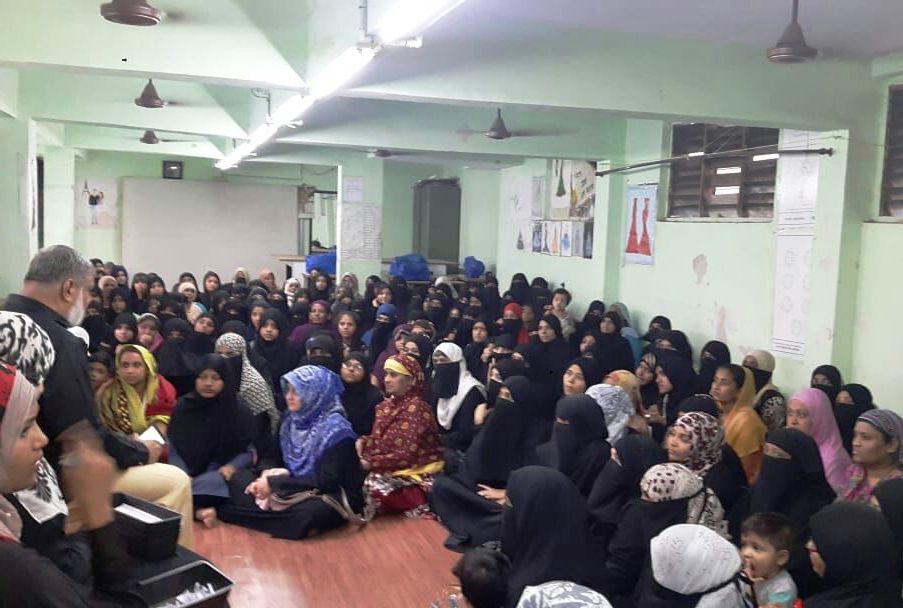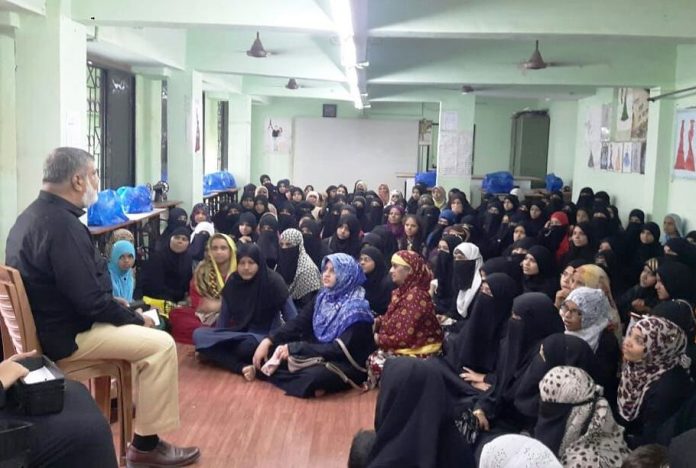By Daisy Katta, TwoCircles.net
Mumbra, a largely Muslim settlement on the outskirts of Mumbai, has a peculiar history; it largely came up after the 1992 riots in Mumbai when a large number of Muslim families fled the main city of Mumbai and had to settle at the outskirts of mainland Mumbai. It has a history of being a refuge for threatened communities, especially Muslims.
The present Mumbra-Kausa region experienced a three-phase migration: first after Bhiwandi riots of 1984, the second after Mumbai riots of 1992-93 and the third phase during the twenty-first century especially after the year 2004-05, after governmental policies increasingly favouring vertical development under the world-class city rhetoric, pushing out marginalised communities to the fringes of the city. And given the nature of its establishment and expansion, it is easy to see why despite being in close proximity to India’s financial capital, the region suffers from serious neglect on the part of the government.

A senior resident of Mumbra Nuruddin Naik recalls, “There was only one rickshaw and one public school when we shifted here in the 80s.” Born and brought up in the South of Mumbai, Naik witnessed years of governmental neglect towards essential facilities, especially education. Naik witnessed a large number of dropouts in the community, mainly because of lack of money to continue education. He says that for the 9 lakh or so population in Mumbra, there is no government higher educational institution in the vicinity. As late as 2010, there was just one Municipal school in the area.
Very few of the students who can afford higher education go to community colleges in far-flung areas and the ones who cannot afford are left to fend for themselves with petty jobs and no guarantee of a sustainable income.
With an increasing rhetoric of “Skilling India”, one needs to understand the nature of skilled workforce that is been promoted in the name of employment and if such an approach is beneficial to a large number of young population in the country. The efforts from disprivileged communities in response to high dropouts include creating institutions for vocational training to bring employment opportunities to unemployed youth in service sectors like electric/mechanical repair, communication and networking, fashion and apparel industry etc. And as Nasir said, since Mumbra also sends many of its youth to the Middle East, these skill give them a more skilled employment.
A more critical reading is to understand the programmes like “Skilling India” in the context of decreasing budgetary provisions to secondary education and the pushing of children from economically and socially disprivileged backgrounds to the informal sector away from formal education.
The situation of secondary and higher education in Mumbra is precarious with high dropout after 10th and 12th. A status report commissioned Maharashtra State Minorities Commission, Government of Maharashtra in 2014 on Muslims in Mumbra found that a staggering 84 % of the population did not opt for higher education, helped in no way by the severe lack of higher educational facilities in the region.
But before taking a critical look at such look at such policies, we tried to understand how communities are responding to it. To understand this scenario we meet with Nuruddin Naik, founder of SEWA in Mumbra.

Naik said that Islam as a religion encourages its followers to learn and education is a core part of the religion and even Mosques should be centre of learning. But due to governmental apathy and community’s own lack of prioritisation, education among the community has suffered. Many of the madrasas are in a dismal condition due to lack of fund from the government. Many of them have not been able to adopt the modern education system.
Naik also expressed that the state of Urdu education is declining due to large number of students and no proper support from the government. Also, the increase in the number of unaided private schools, which cannot be afforded by a large section of the community, leads to an increase in dropouts after tenth standard.
This motivated Naik to start SEWA, an organisation which offers free educational courses that focuses on vocational training. “The only condition to enroll is that that you need to be a dropout”. SEWA which is funded by Anjuman-I-Islam trust caters to dropouts from the community who are currently enrolled in skill development ITI courses and the end of which they are provided with Ministry of Human Resource & Development, Government of India (MHRD)-approved certificates. Contrary to what is assumed, “Muslim youth, including the girls, are taking to education in a big way”, says Naik.
These courses are run free of cost and have boosted livelihood opportunities, especially for women of the community. The first year of enrollment saw almost 700 youngsters, most of them women who are now enrolled in various courses. This year, more than 500 such students are set to graduate.
Although Naik believes that formal education is the need of the hour, he added, “We can’t always depend on the government to take measures, sometimes we need to act as a community and solve our own problems.”
We also spoke to one of the trainees who passed out and is now teaching at SEWA. Kainat Saboo is 18 years of age and has just completed her beautician and fashion-designing course. Kainat tells us how many girls like her have few opportunities for higher education in Mumbra, she says, “ The parents believe that the mohal (atmosphere) of Mumbra is not very good for girls her age.” She adds that many other families, like her family, have financial problems due to which they are not able to continue education.
Kainat was able to study till 10th grade and then joined SEWA after she heard about the courses. She says she will appear for her 12th std exam as a private candidate and does not plan to continue her education. Kainat is currently employed with SEWA and trains 48 girls in beautician courses. Most of the women and girls she teaches are dropouts. But she is hopeful, “ The girls usually start working once they pass out…at least it gives us financial independence, that is a good thing,” she adds.


